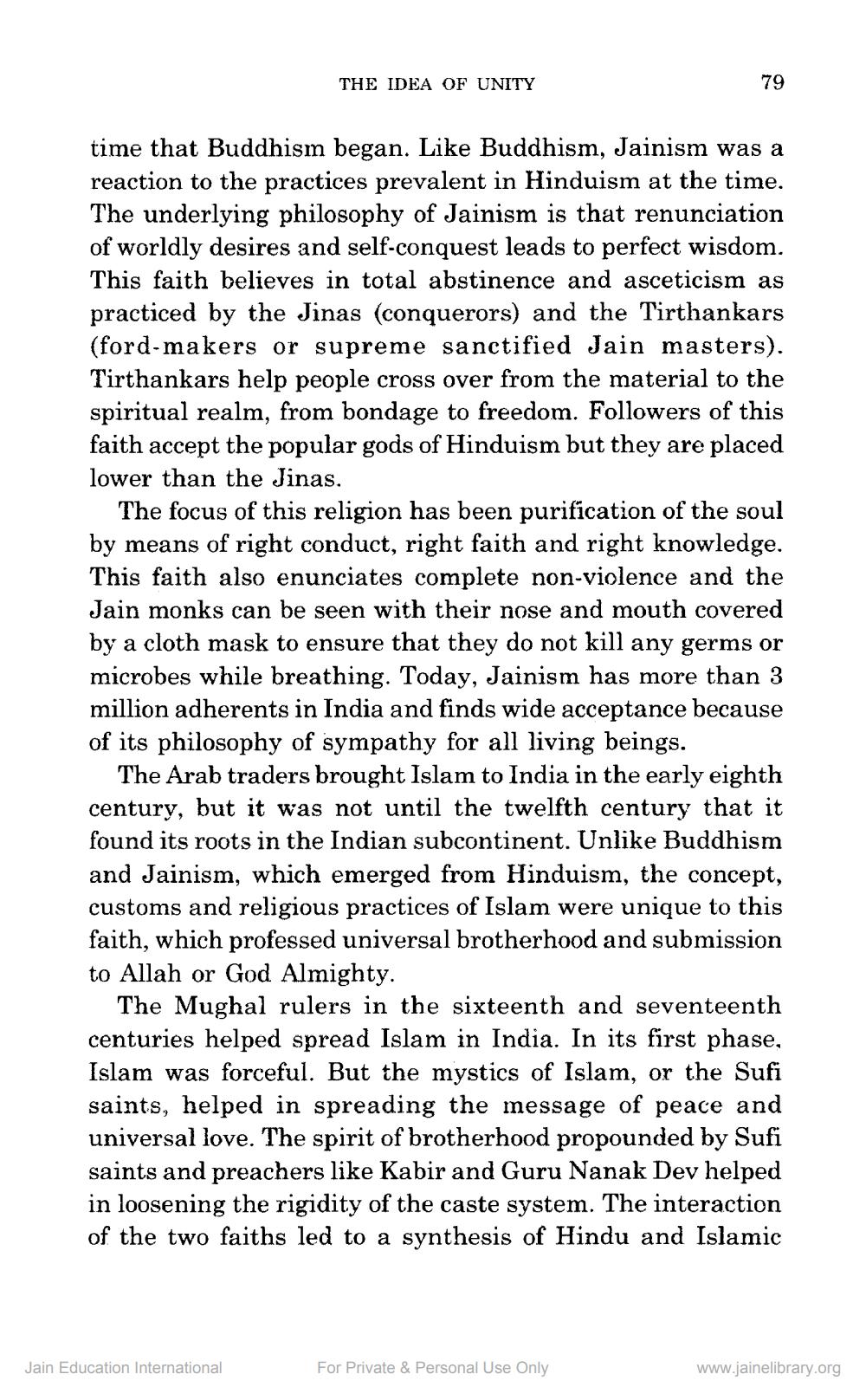________________
THE IDEA OF UNITY
79
time that Buddhism began. Like Buddhism, Jainism was a reaction to the practices prevalent in Hinduism at the time. The underlying philosophy of Jainism is that renunciation of worldly desires and self-conquest leads to perfect wisdom. This faith believes in total abstinence and asceticism as practiced by the Jinas (conquerors) and the Tirthankars (ford-makers or supreme sanctified Jain masters). Tirthankars help people cross over from the material to the spiritual realm, from bondage to freedom. Followers of this faith accept the popular gods of Hinduism but they are placed lower than the Jinas.
The focus of this religion has been purification of the soul by means of right conduct, right faith and right knowledge. This faith also enunciates complete non-violence and the Jain monks can be seen with their nose and mouth covered by a cloth mask to ensure that they do not kill any germs or microbes while breathing. Today, Jainism has more than 3 million adherents in India and finds wide acceptance because of its philosophy of sympathy for all living beings.
The Arab traders brought Islam to India in the early eighth century, but it was not until the twelfth century that it found its roots in the Indian subcontinent. Unlike Buddhism and Jainism, which emerged from Hinduism, the concept, customs and religious practices of Islam were unique to this faith, which professed universal brotherhood and submission to Allah or God Almighty.
The Mughal rulers in the sixteenth and seventeenth centuries helped spread Islam in India. In its first phase, Islam was forceful. But the mystics of Islam, or the Sufi saints, helped in spreading the message of peace and universal love. The spirit of brotherhood propounded by Sufi saints and preachers like Kabir and Guru Nanak Dev helped in loosening the rigidity of the caste system. The interaction of the two faiths led to a synthesis of Hindu and Islamic
Jain Education International
For Private & Personal Use Only
www.jainelibrary.org




